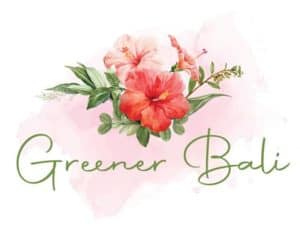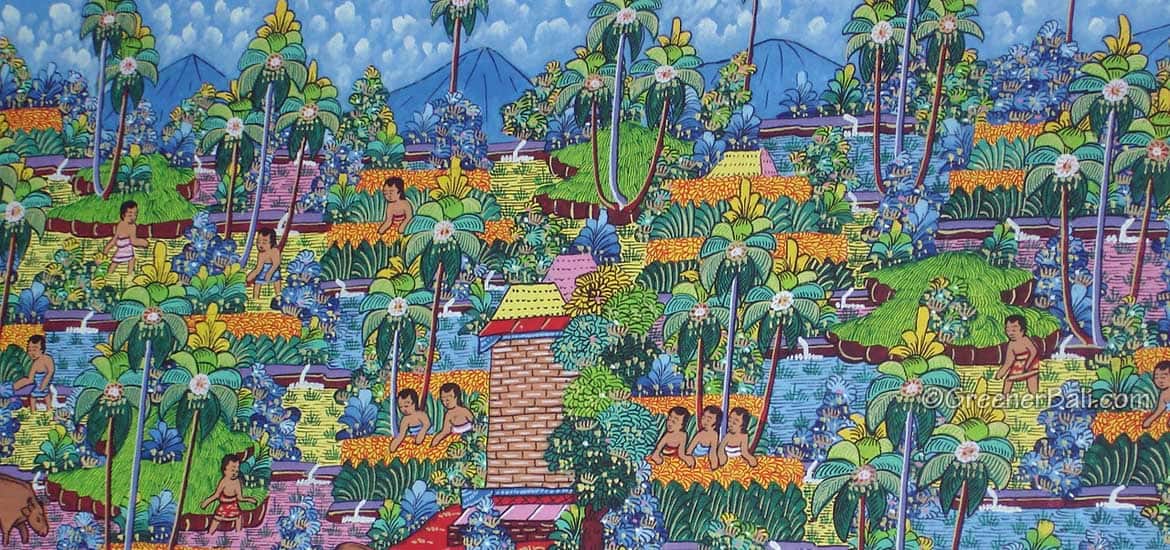Bali paintings were made for the kings and temples. However, with the arrival of western artists, this local art form started to change and evolved into different styles.
When you are in Bali the first thing you will notice is that there are painting everywhere. There are paintings in restaurants, hotel lobbies, toilets, on top of cars and even on the backs of motorbike drivers.
Shops sell paintings in every style and color. When you stroll along the streets Sanur, Ubud or Kuta you will very likely see them.
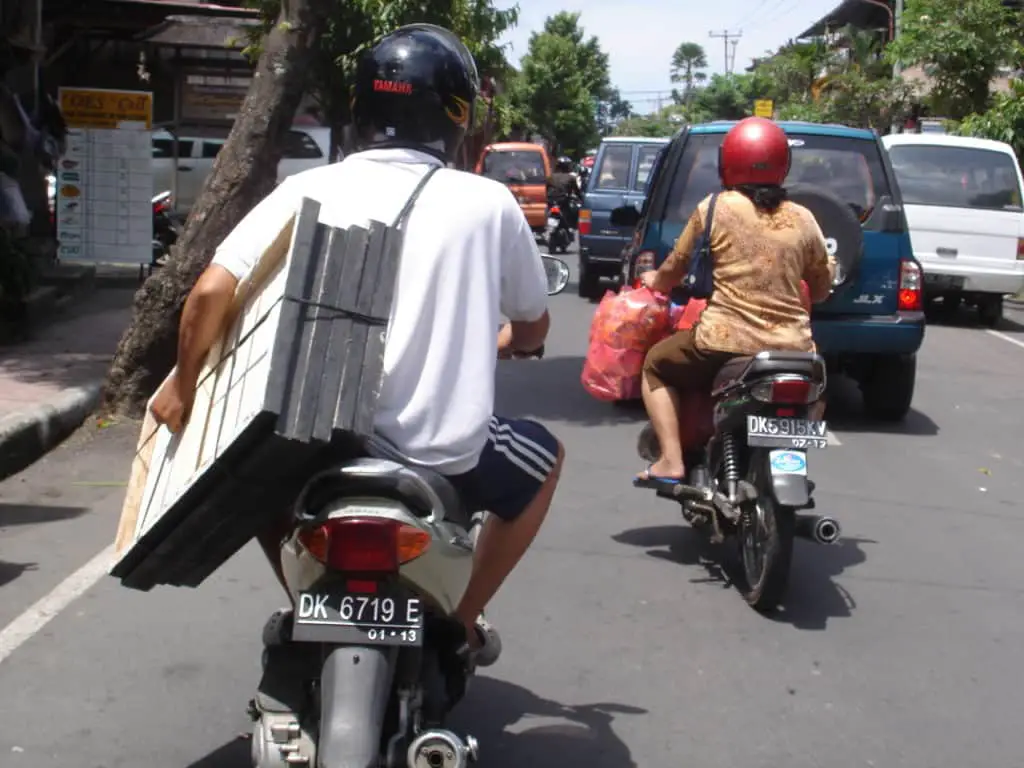
Everybody seems to be a painter or in the painting business. It actually makes sense. Every Balinese would consider oneself an artist as it was part of everyday life and religion. It wasn’t considered a form of art like in the western world.
After work was done in the rice fields they would come together and make ornaments, decorations and paintings for religious ceremonies, temples and the palaces of the Balinese kings. They painted together and that’s the reason that you can’t find any names on the paintings before the 1920s.
Kamasan Style
There was also a group of painters who were more talented than the average painter. Most of them came from a small village called Kamasan near Klungkung (now Semarapura). Klungkung was the capital of the Gelgel Kingdom, so naturally many artists and painters settled in Kamasan.
Together they painted various epics of the popular Mahabharata and Ramayana Hindu stories. The painter used large rectangular cloths called Langse or narrower ones 30cm wide by several meters called Iders-Iders.
The Langse were used as curtains in the palaces of the kings or as a wall decoration in temples. Shrines and temples were decorated with the smaller Iders-Iders. Kamasan painters portrayed many scenes of the Hindu epics from beginning to end on these single canvases. This resulted in the busy and crowded character of the Kamasan style.
The works of these artists had to follow strict rules and guidelines of the Wayang style originated from East-Java. The Wayang style is a flat two-dimensional style that portrays the figures in the story in a certain way. Only the colors red, blue, brown, yellow were used together with light ochre for flesh colors.
The kings, princes, noblemen, and heroes always had to be drawn with certain colors to understand their character and status.
Their headdresses, clothing, and jewelry were always prominent and their gestures and postures graceful. On the other hand, the devils and giants in the paintings were drawn with canine fangs, bulging eyes, and fat bodies.
Nowadays in Kamasan, you can still see painters working in the traditional Wayang style.
Ubud Style
At the end of the 1920s, the Bali paintings were in decline caused by a lack of new orders for temples and religious ceremonies.
But then the German painter Walter Spies and later the Dutch painter Rudolf Bonnet settled down in Ubud.
They brought with them European painting techniques that were completely new to Bali. Local Balinese artists were influenced by them and started to see painting as an art form. Something they’ve never done before.
Walter Spies and Rudolf Bonnet formed the Pita Maha Group together with the royal Cokorda Gede Agung Sukawati from Ubud. Their aim was to help local painters to be more expressive, develop their painting skills and create an international market for their works. From then on local painters started using shades and depths, bright colors and perspective in their works.
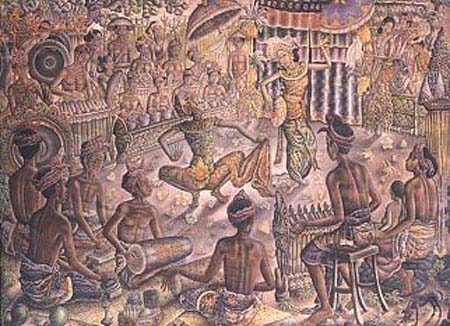
The Pita Maha Group was a huge success. A lot of painters started to join the group and make a living from their Balinese paintings. Paintings were eventually sold word wide. Their types of painting styles are known as the Ubud Style.
The Pita Maha Group existed until the outbreak of World War II. Walter Spies (German national) was imprisoned by the Dutch colonial power and put on a boat to Sri Lanka. This prisoner boat was bombarded by the Japanese killing Walter Spies.
Rudolf Bonnet was also imprisoned and put in work camps around South-East Asia. However, he returned after the war and co-founded one of the best museums in Ubud
The Pita Maha Group also influenced painters in the neighboring village of Batuan. The painters, however, remained to apply the Kamasan style of crowded canvasses with scenes from daily lives. Their style is called the Batuan style.
Young Artist Style
After the war in 1956, another Dutch painter called Arie Smit settled down in Penestanan near Ubud. He opened a studio where the children of local rice farmers were stimulated to draw from their imagination and experiences of daily life.
Arie Smit provided the local children with as many painting materials as possible. They drew differently than the painters from the Pita Maha school, who loved to paint traditional reflections of myths and legends.
The students of the Young Artist style as they were called, used a childish painting style with bright colors and dark outlines in their paintings.
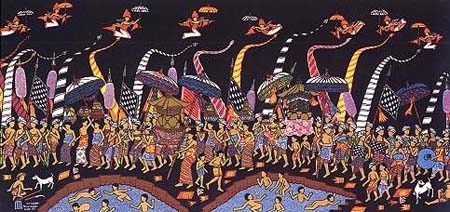
Influence of tourism
With the rise of tourism in the 1960s, more paintings were drawn than ever in Bali. This was also the time when mass production of Balinese paintings in every style possible started to arrive.
The Balinese people started to open shops or galleries with all sorts of art for tourists. This explains the many art shops in the tourism centers of Kuta, Sanur, and Ubud.
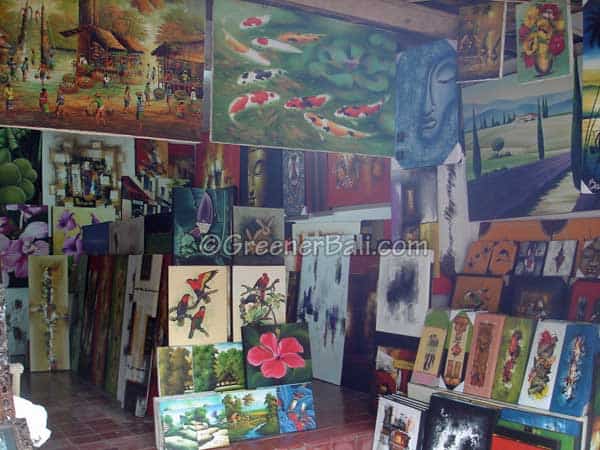
If you are interested in buying any of the paintings try to visit one of the museums in Ubud. At Puri Lukisan Museum, Neka Museum or the Arma Museum you can get a good overview of the various painting styles. This will give you an idea of what to look for in a painting when buying a painting.
To make pictures in the museums is prohibited because the flash of your camera could damage the paintings. Therefore for this page, we’ve used pictures from the museum websites.
